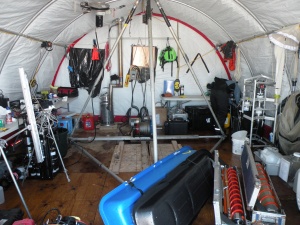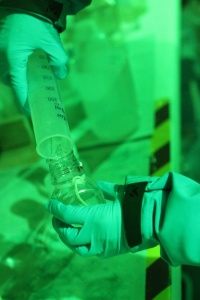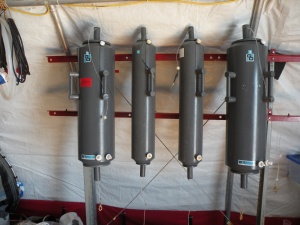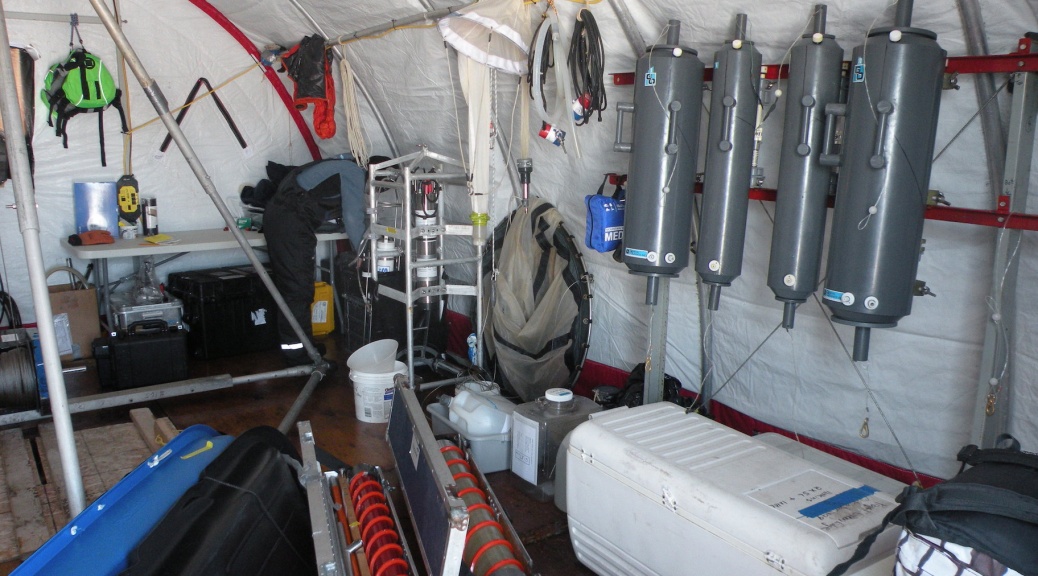
Sampling water is a core activity at the ice camp. Since water has different properties depending on its depth, we study the entire water column from surface to bottom. Of course, one cannot dive with a bottle to a depth of 350m to sample deep water…
So how can we sample water in the very deep layer?
Credit: Christiane Dufresne
To sample, we use Niskin bottles, which are plastic tubes open at both ends, fixed on a wire. We lower the bottles to a selected depth and then launch a messenger, a weight that slides down the wire. When the messenger hits the bottle, the caps are released which closes the bottle. The seawater sample is then brought back to the surface and is transferred to containers to be transported to the lab.

Inside the Polarhaven tent, we deploy Niskin bottles
But why do we need water samples and what can we learn from them?

Analyzing at the lab
In the lab, many properties of the seawater samples are analysed, including, for example, nutrient concentrations and phytoplankton community composition. Thus, we analyse the water samples and search for the nutrients, such as nitrate, phosphate, ammonium or silicate. Their concentration in water is estimated and lab experiments are conducted to assess their consummation fate by phytoplankton. We aim to better understand the interaction between environmental parameters and biogeochemical processes.
Genetic analyses are also performed to study diversity through DNA tests. Counting is performed with flowcytometer and cryoprotectant is added to preserve plankton while it is frozen. We mainly aim to study diversity and its evolution through time.
We also study optics properties as particulate absorption or fluorescence to determine lability of organic matter, that is to say its bio-availability. These kinds of results are very useful to better understand how much organic matter is available for bacteria to convert into minerals and to study the carbon cycle.
How many nutrients do phytoplankton consume? Which plankton species can we find? Are species the same before and after the spring bloom? Is there new species to discover? All of these questions require many analyses and the results we are obtaining through the GreenEdge project will contribute to enhancing our knowledge of how the spring phytoplankton bloom develops under the ice.

Niskin bottles


